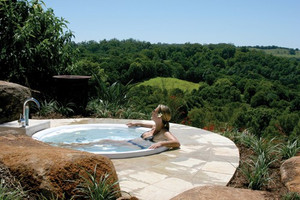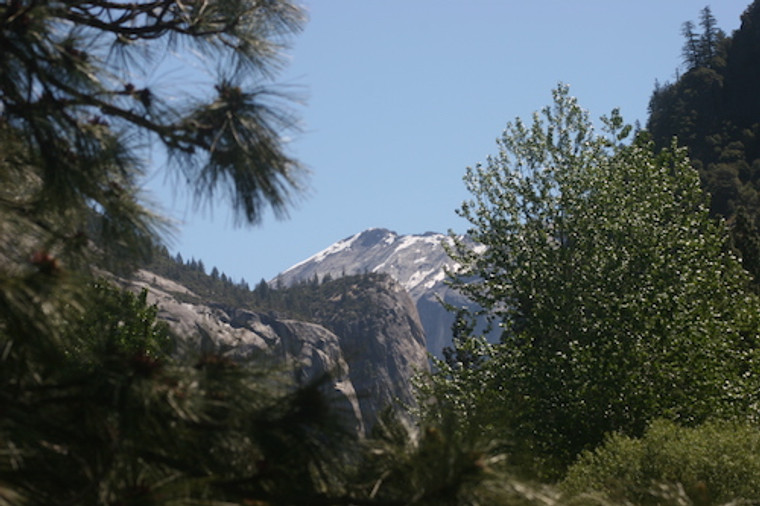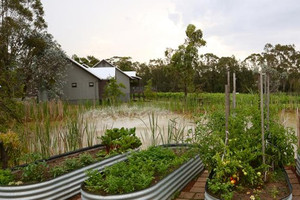
There’s a well-worn anecdote about Yosemite National Park which involves a long time ranger and resident being asked what he’d do if he had just one day in the wilderness area. “I’d sit by the Merced River and just cry” is reportedly his response. The overwhelming scale and beauty of Yosemite makes a day trip into its deep cut valleys lined with waterfalls and towering sequoia trees seem ludicrously inadequate. Yet each year millions of visitors flock to the Sierra Nevada Mountains in central California for a brief glimpse of the awe-inspiring landscape that’s evolved over a 500 million year period.
All About Yosemite
Its waterfalls, massive monoliths, towering cliffs and sweeping meadows have inspired artists, writers and photographers and Yosemite National Park has to be seen to be believed. Yosemite Valley is the centrepiece of the Park and perhaps the world’s best example of a glacier carved canyon. It’s 11 km long and just one and a half kilometres across at its widest point, and in spring Yosemite Valley puts on a show of epic proportions as the winter snow melts. The dramatic valley walls are draped with waterfalls that throw spray hundreds of metres into the air, and spring flowers spread across the plains. During the Ice Age three million years ago, Yosemite Valley was formed when massive glaciers scraped and carved the canyons and valleys with such force, that the remaining granite still shows the direction of the glacial movement. The last glacier melted 10,000 years ago and Lake Yosemite was formed when rock debris dammed the valley - tributary creeks formed off the lake and plunged over the sheer cliffs to give birth to its awesome waterfalls.
Driving Yosemite
Driving Yosemite Valley in a day is possible, although it doesn’t really leave enough time to enjoy the hundreds of hiking trails in the area. The road through and around the valley is basically a one-way loop and the first encounter takes place at Bridalveil Fall - one of the most spectacular waterfalls in the valley. The native Ahwahneechee called this place Pahono or “spirit of the puffing wind” as the wind swirls around the cliff and blows the water out to the sides in a delicate free-fall - hence its modern name. Bridalveil Fall is deceptive in that when it’s viewed against the massive canyon walls it appears fairly small to the naked eye - in fact it’s a 190 metre drop, or roughly the height of a 60-story building.
After crossing the majestic Merced River, Cathedral Rocks dominates one side of the valley while El Capitan towers on the other side at 1,100 metres from base to summit. “El Cap” is a favourite with climbers and is reportedly the largest single monolith of granite in the world. Yosemite Falls is the highest waterfall in the United States and the fifth largest in the world at a total of 740 metres - it looks like one cascade but in fact is a sequence of three waterfalls. It’s the highlight of the valley experience and it’s quite easy to walk to the base of the falls on a relatively short marked trail - but be prepared to get wet as the spray from falls covers a one kilometre-plus area in spring. It’s an ethereal experience - walking through a heavy mist with sunlight playing on the droplets and by the time you reach the pool at the bottom, expect to be drenched.
Hiking Trails
The melting snow and resulting excess water does mean that many of the trails in the valley are under water and not accessible - although park rangers are happy to recommend walks that are not submerged. At every turn, there’s a stunning vista - cross the Merced River and follow Tenaya Creek, which itself is a frothing torrent of icy water, and classic landmarks such as Glacier Point and Half Dome emerge in this one-of-a-kind landscape. Glacier Point itself is a must-stop on the way out of the valley - from here you see the valley in its majestic entirety with the massive Yosemite Falls dwarfed by the awesome cliff faces. From one kilometre above the valley floor, the USA’s biggest waterfall looks tiny against the backdrop.
In keeping with the theme of overwhelming scale, on the southern entrance/exit to Yosemite is the Mariposa Grove of Giant Sequoias - home to some of the world’s largest trees. There’s about 500 of them in Mariposa Grove - the biggest of them measures 30 metres around the base with a diameter of four metres and is 64 metres high. It’s believed to be 2,700 years old, weighs 900 tonnes and has enough lumber to build 20 homes. It’s typical of the ancient beauty and staggering scale of one of the most stunning national parks in the world - and most people leave feeling humbled by the experience.
- By:
- Ben Hall









